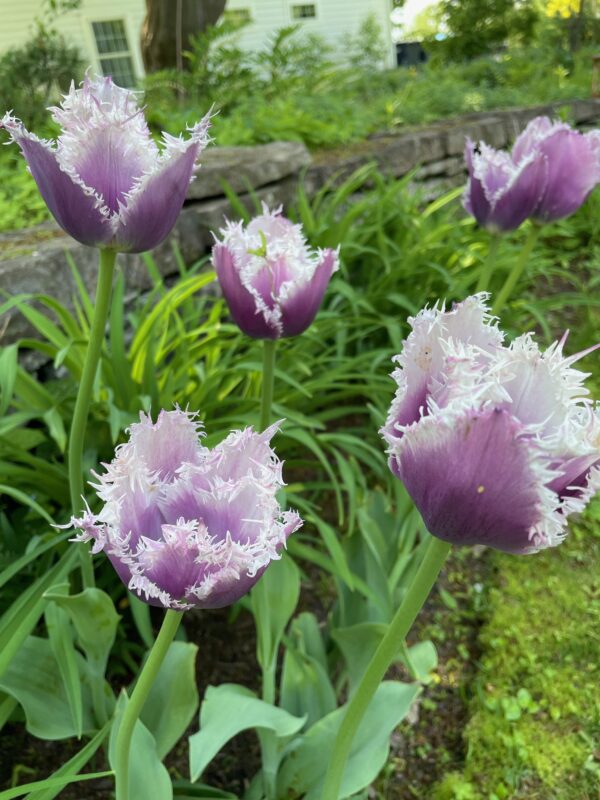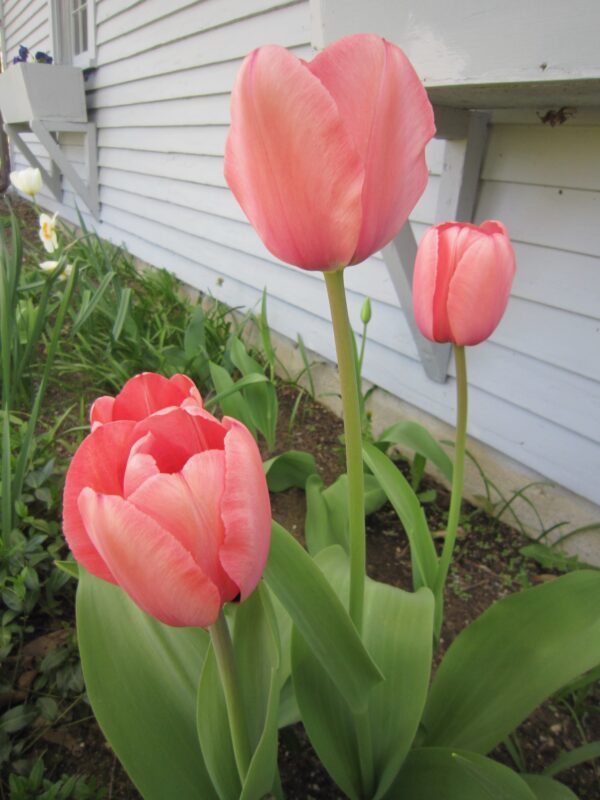Bulbs: There’s so many choices, so little garden space
Buying spring bulbs for me is a lot like approaching a salad buffet in a restaurant. You want a little bit of everything, just to see how it tastes. Perhaps you’ll discover something new to you and something you’ll definitely want more of. However, sometimes we take more than we can use or deal with.
While perusing my favorite bulb catalogue, McClure & Zimmerman, I keep finding more and more must-haves, forgetting that I am now officially 85. It becomes a struggle to find enough holes in my garden to place everything and it’s cold out there. Gloves are often needed.
When spring arrives, I am thrilled that I sallied forth and got everything in the ground. First of all, I’ve forgotten exactly what’s coming up where and when the blooms appear. I am thrilled with the display. I do keep a list and also notes of what is planted where.

Through the years I return to my favorites. Mostly I am ordering tulips as they are least likely to return another year. But a new narcissus or daffodil will catch my eye on occasion as well.
Daffodils will last for years in the garden and may only need division occasionally. Mine have proven to be carefree and many remain from when we moved in, 27 years ago now. I also am drawn to minor bulbs which tend to return and often are transported to new spots, by critters I assume. Scilla, muscari, various bluebells. I love Camassia which comes in lovely blue shades as well as white. The tall accent spikes tend to appear late in the spring.
The earliest bulbs to appear, of course, are snowflakes and snowdrops (Leucojum and Galanthus). I have a patch easily visible from an upstairs window, and I anxiously look amidst the melting snow for signs of them.
About the same time, in a bed closer to the back door, are my Iris reticulata. Short in stature and delicate but hardier than you’d guess. They withstand a late snow shower. My favorite is ‘Katharine Hodgkin’, a mere 5 inches of pale blue with yellow accents. You’ll find others in shades of purple and yellow as well.
My collection of daffodils runs the gamut of single trumpets of bright yellow to doubles with fluffy petals and shades of orange, peach, and even lean towards pink. My favorites in this category are ’Thalia’ in pure white with two or three blooms to a stem and a lovely welcomed fragrance.
The tiny supermarket offerings of tete-a-tete or cheerfulness are worth buying and enjoying, but then drying in an onion bag and planting in fall with your other bulbs. They will return and surprise the forgetful among us. Another one I love for its simplicity is Narcissus poeticus recurvus, also called pheasant’s eye. Other poeticus daffodils have been renamed Actaea. Both of these tend to be the very last to bloom. The blooms are pure white except for the central red and yellow “eye.”
When choosing tulips, I personally like to keep roughly the same palette, adding each year so that my favorite scheme carries on. I rarely choose red or yellow and focus on purples, peach, ivory and pink with simple blooms.
However, your liking might be double blooms or the striking red tulip called king’s blood, or blushing apeldoorn in yellow feathered with orange. Mrs. J.T. Scheepers is purest yellow. There are several fringed tulips such as swan wings, blue heron or my favorite, cummins in lavender. Angelique is a gorgeous double-pink treasure.

The lily-shaped tulips with pointed petals add a nice diversion for the eye and come in many shades. I love plain ivory. Of the large Darwin hybrids, menton is my favorite. Looking carefully, you’ll see pink, orange and yellow shades blended so skillfully by nature. These are meant to go into arrangements. Queen of the night is nearly black and really shows up against my gray house.
As far as planting goes, the size of a bulb determines the depth for planting. So large double daffodils might go as deep as 6-8 inches but snowdrops can be pushed in a few inches. One trick for when you’ve overbought and run out of time is to plant a large pot with large bulbs near the bottom and layer smaller ones up with soil covering each layer. Keep in a cold shed or garage. I usually add some snow for moisture when I think of it during the winter. As it warms up in spring, bring out your already planted containers for accents by the front door. You can still enjoy the emergence of your favorites.
When planting in my garden beds, I like to cluster the bulbs in groups of five or 10. My eye shudders at soldiers in a row or a mish-mosh of colors and shapes. Each group surrounded by greenery shows off its attributes best.
You needn’t order from catalogs or online, as our local nurseries and hardware stores have already got bulbs in stock. It’s best to buy early for the best choice. Of course, there is usually more diversity online but many of the above-mentioned selections can be purchased locally.
Try a few at least. Plant with a child. They will have forgotten by spring, but you will be there to remind them and to hunt together for their emergence. You will be happy you did.

